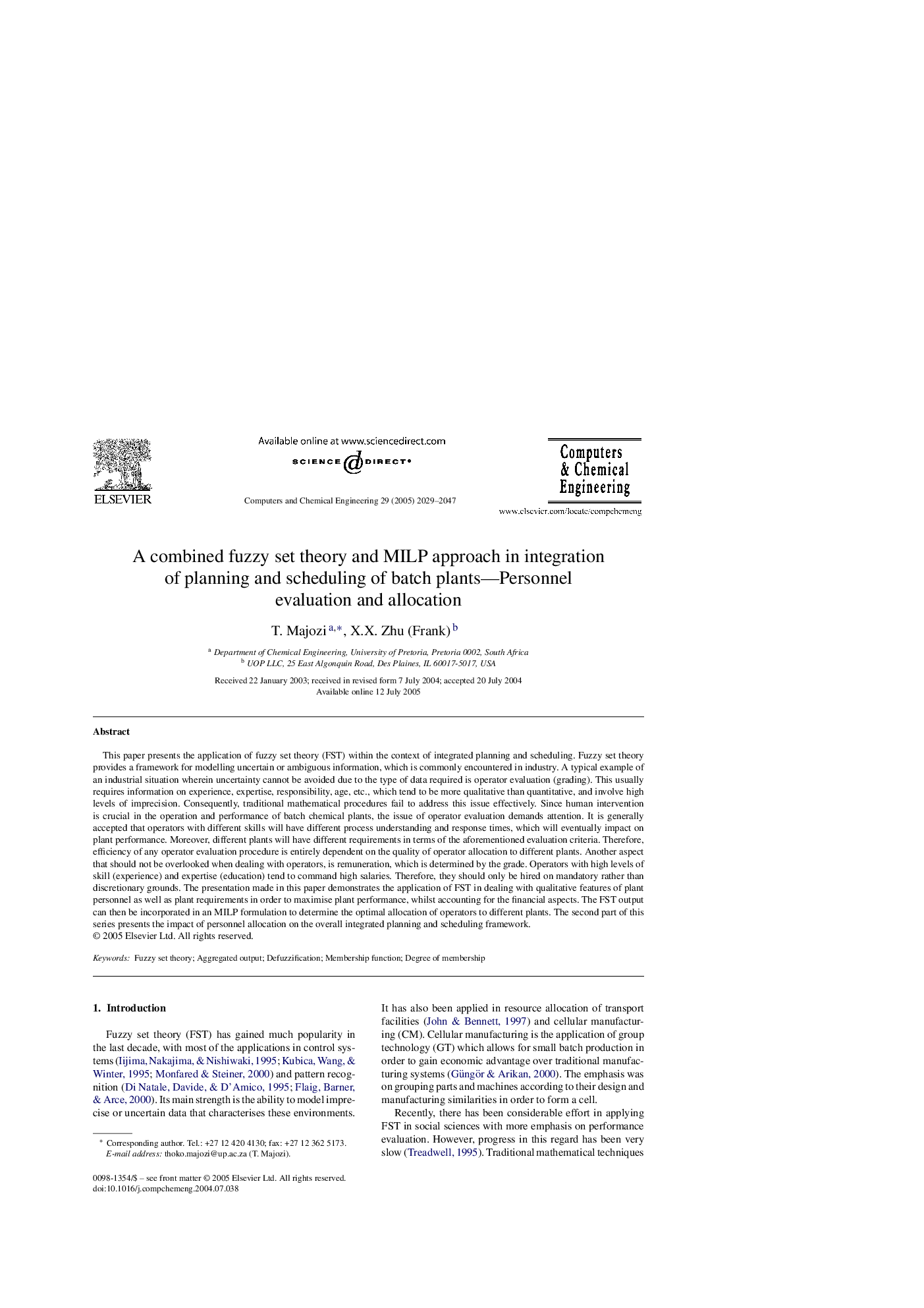| کد مقاله | کد نشریه | سال انتشار | مقاله انگلیسی | نسخه تمام متن |
|---|---|---|---|---|
| 174101 | 458630 | 2005 | 19 صفحه PDF | دانلود رایگان |

This paper presents the application of fuzzy set theory (FST) within the context of integrated planning and scheduling. Fuzzy set theory provides a framework for modelling uncertain or ambiguous information, which is commonly encountered in industry. A typical example of an industrial situation wherein uncertainty cannot be avoided due to the type of data required is operator evaluation (grading). This usually requires information on experience, expertise, responsibility, age, etc., which tend to be more qualitative than quantitative, and involve high levels of imprecision. Consequently, traditional mathematical procedures fail to address this issue effectively. Since human intervention is crucial in the operation and performance of batch chemical plants, the issue of operator evaluation demands attention. It is generally accepted that operators with different skills will have different process understanding and response times, which will eventually impact on plant performance. Moreover, different plants will have different requirements in terms of the aforementioned evaluation criteria. Therefore, efficiency of any operator evaluation procedure is entirely dependent on the quality of operator allocation to different plants. Another aspect that should not be overlooked when dealing with operators, is remuneration, which is determined by the grade. Operators with high levels of skill (experience) and expertise (education) tend to command high salaries. Therefore, they should only be hired on mandatory rather than discretionary grounds. The presentation made in this paper demonstrates the application of FST in dealing with qualitative features of plant personnel as well as plant requirements in order to maximise plant performance, whilst accounting for the financial aspects. The FST output can then be incorporated in an MILP formulation to determine the optimal allocation of operators to different plants. The second part of this series presents the impact of personnel allocation on the overall integrated planning and scheduling framework.
Journal: Computers & Chemical Engineering - Volume 29, Issue 9, 15 August 2005, Pages 2029–2047